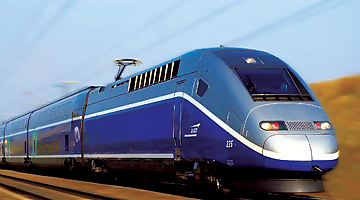High Speed Train between Coruña and Algarve to Possibly Come in Existence in 2017

High speed rail
Published on
Modernisation of the Minho train line could make high speed travel between the Spanish Coruña and Algrave in Portugal a reality in 2017. The announcement was made by Atlantic Axis secretary general Xoán Mao.
Mao announced the possibility for high speed train travel between the two countries after a meeting held by the association in Ourense, Galicia. The investment in the Minho train line modernisation is going to be approximately 100 million euro.
In the beginning of 2015, the Spanish government will have the Galicia high speed train track fully operational. According to Portuguese officials, the country will be ready with all work on the Minho train line by the end of 2016.
Official tenders for work on Minho line are to be launched at the beginning of the year, Mao said.
Funding for work on the Portuguese train line is partially provided by the European Union. According to Mao, the Portuguese government was pressured to begin the modernisation project since 2010. The government initially planned to abandon the high speed train line project and another regular train line initiative for connecting Oporto and Vigo.
The available funds and the set deadline for the completion of the project show that the pressure on the Portuguese government has paid off, Mao said. The Atlantic Axis will be monitoring progress and work on the project, making sure that Portugal is fulfilling its commitment, he concluded.
The modernisation of the Minho train line will also involve the electrification of the portion up to Viana de Castelo. This phase of the project is expected to begin in 2016. Work on the line will continue to the Valença border in 2017.
According to Atlantic Axis estimates, the train travel from Oporto to Vigo will require 90 minutes upon the completion of the high speed train project. Right now, the trip requires twice the time.
The entire trip from Oporto to Coruña in Galicia will require approximately 160 minutes, once the high speed train network is completed, possibly in the beginning 2017.
Recently, Algarve demanded governmental support and funding in an attempt to launch new infrastructure projects. One of the projects that Algarve required funding for was a new railway line connecting the region to Spain.
The modernisation project is announced at a time when more than 60 percent of the Portuguese railway passengers are expressing their satisfaction with the service. According to Eurobarometer surveys, only a quarter of the Portuguese population is using train transportation, however.
The figure is still relatively low, as the EU average train usage is 29 percent. Only 11 percent of the Portuguese respondents said that they use railway transportation numerous times during the year. The EU average is 15 percent.
The European Commission itself is attempting to boost satisfaction, which is 58 percent across European countries. The Shift2Rail project is a public-private partnership that the Commission launched in the end of 2013. The investment of one billion euro is expected to modernise European train transportation and further boost the level of passenger satisfaction. Currently, railways are responsible for transporting solely six percent of the European passengers.
European train transportation had always been experiencing sustained growth. The trend changed with the beginning of the financial crisis. Rail freight transport was hit more severely but passenger transport experienced a decline, as well. Recovery started in 2010 and has been an ongoing trend. In 2012, rail passenger transport registered growth but it was still affected by the financial crisis. Portugal was one of the countries that registered decrease in 2012. The high speed train line project is one of the attempts to stimulate railroad transportation growth and further recovery from the negative trends of the past years.
Published in: Travel